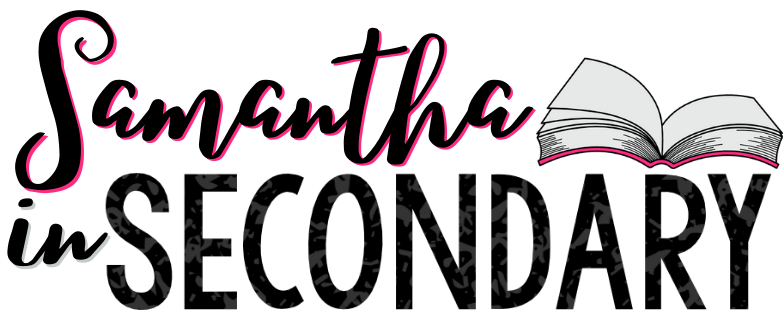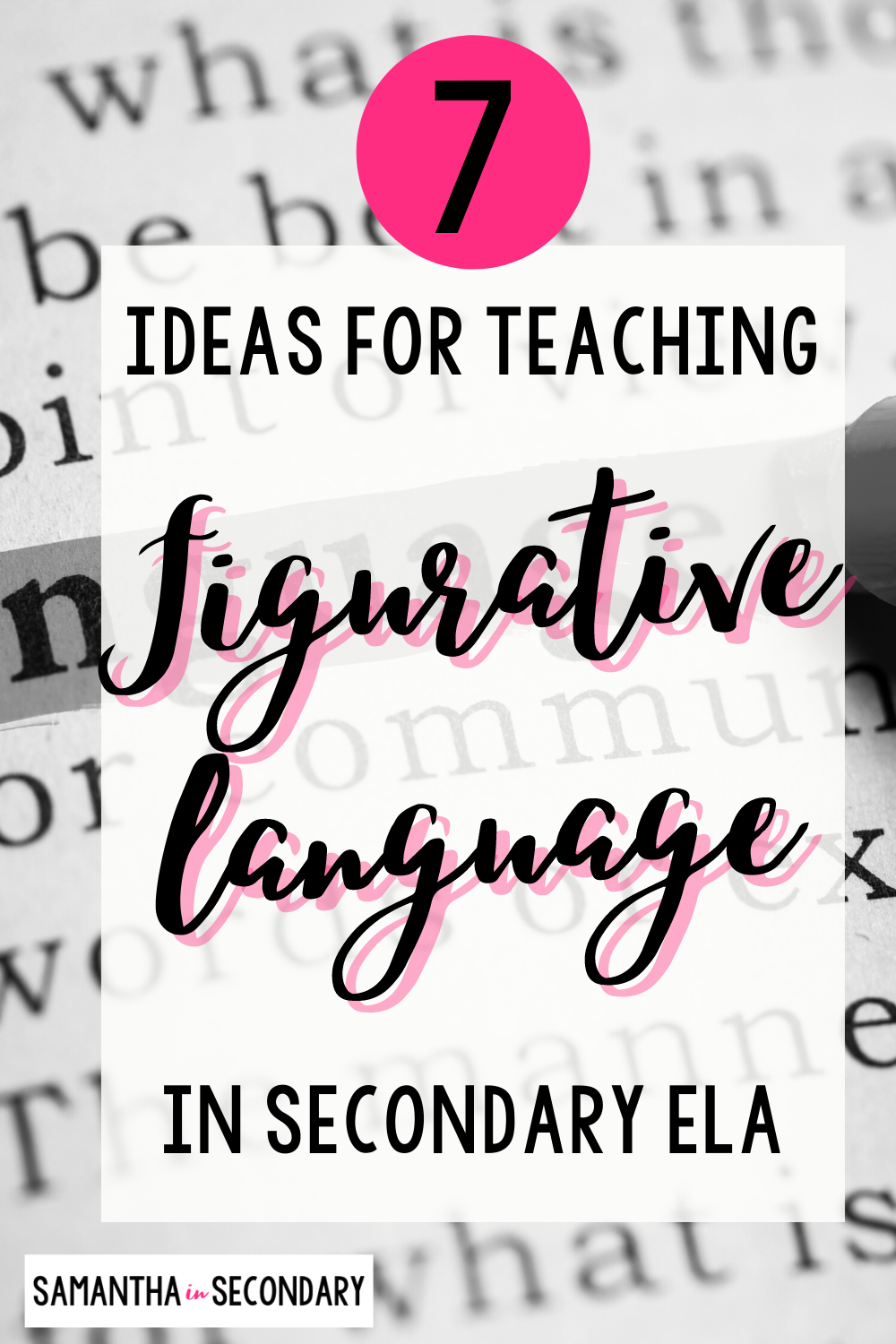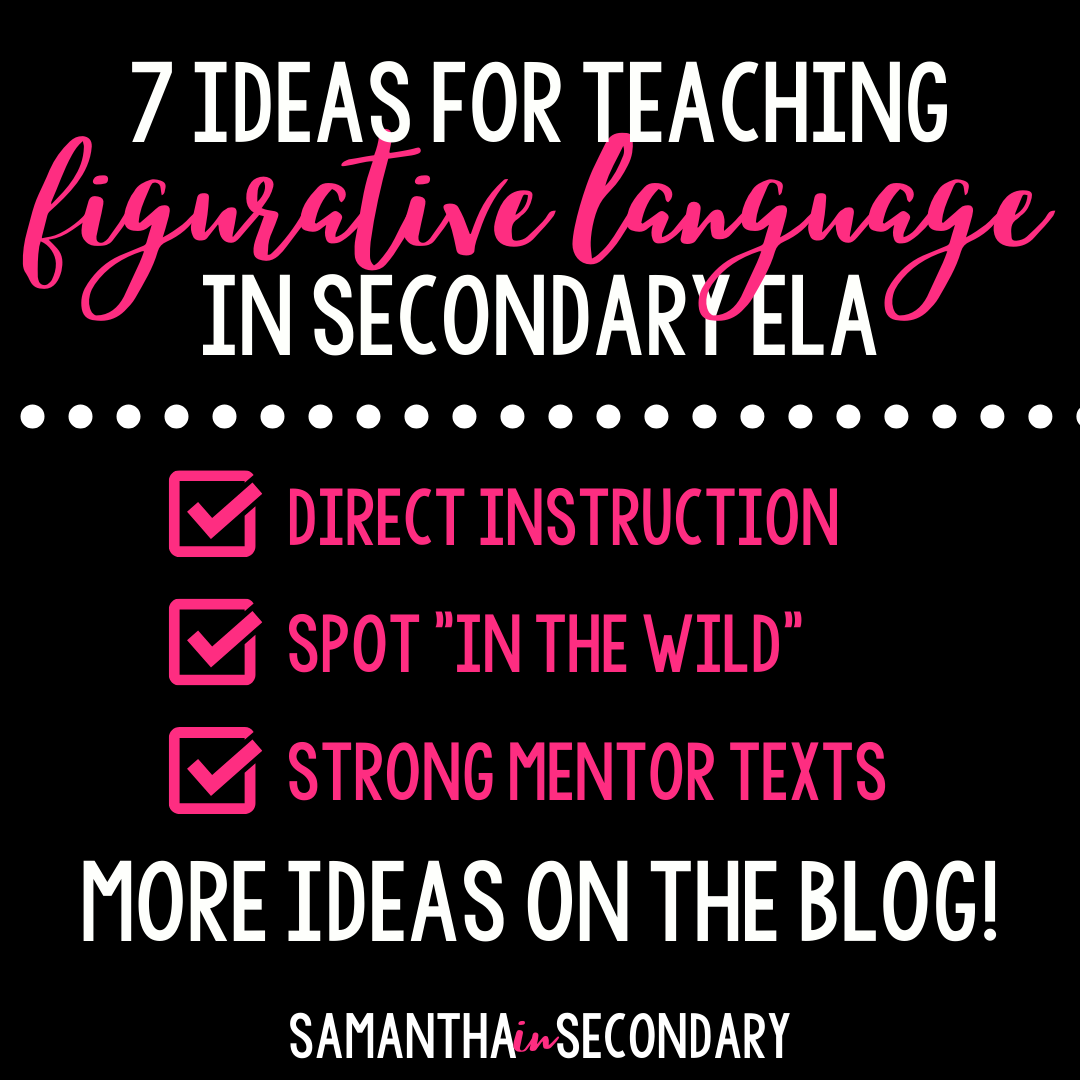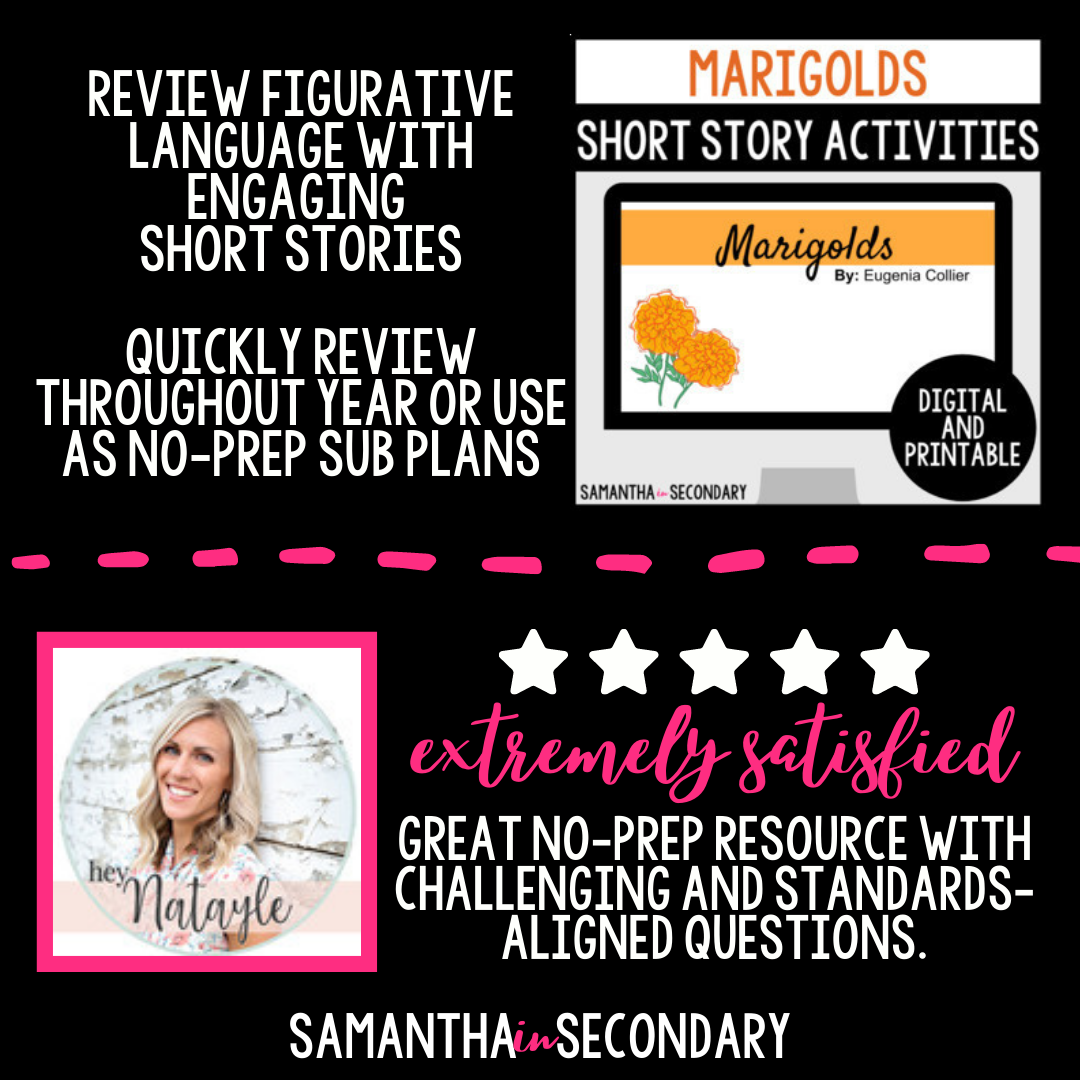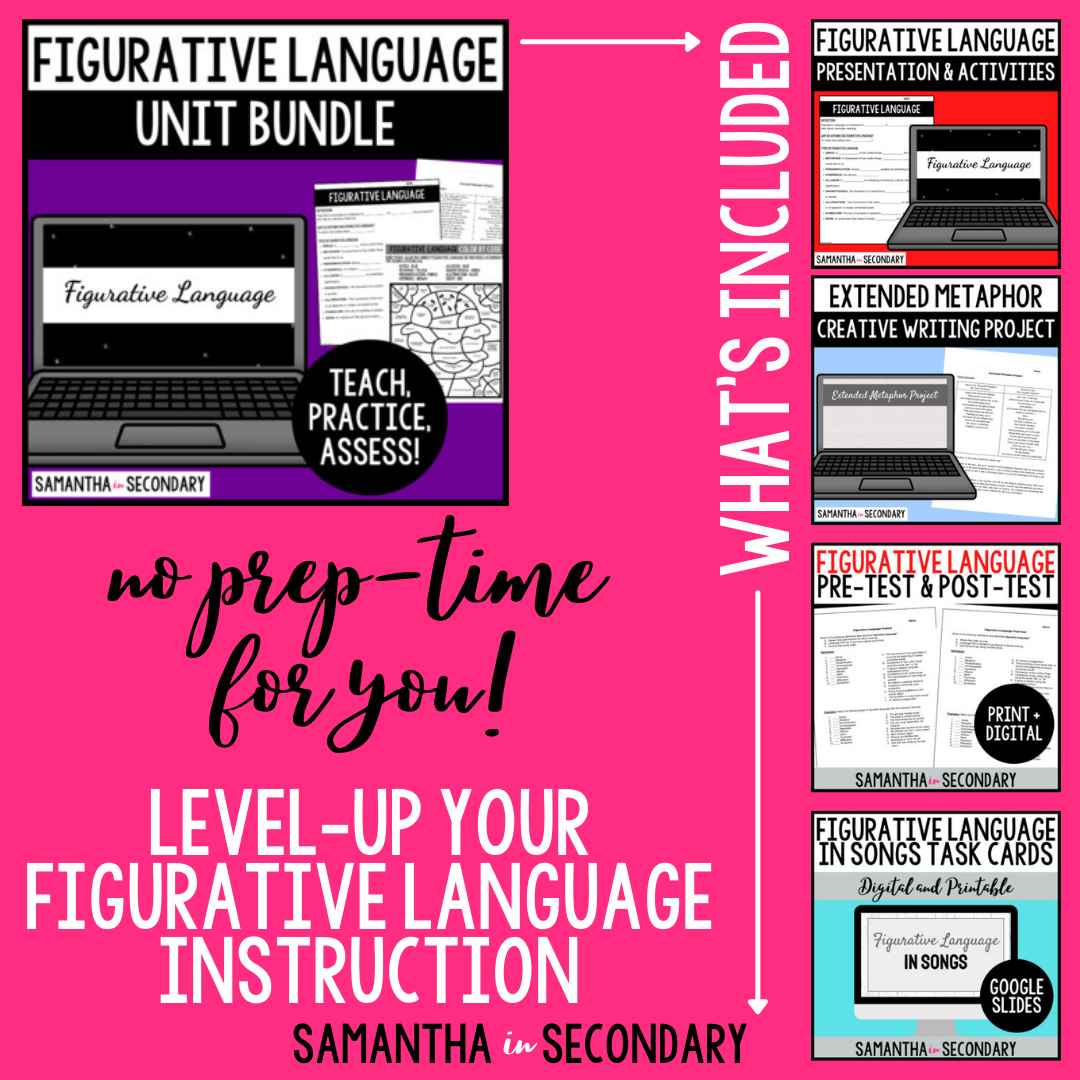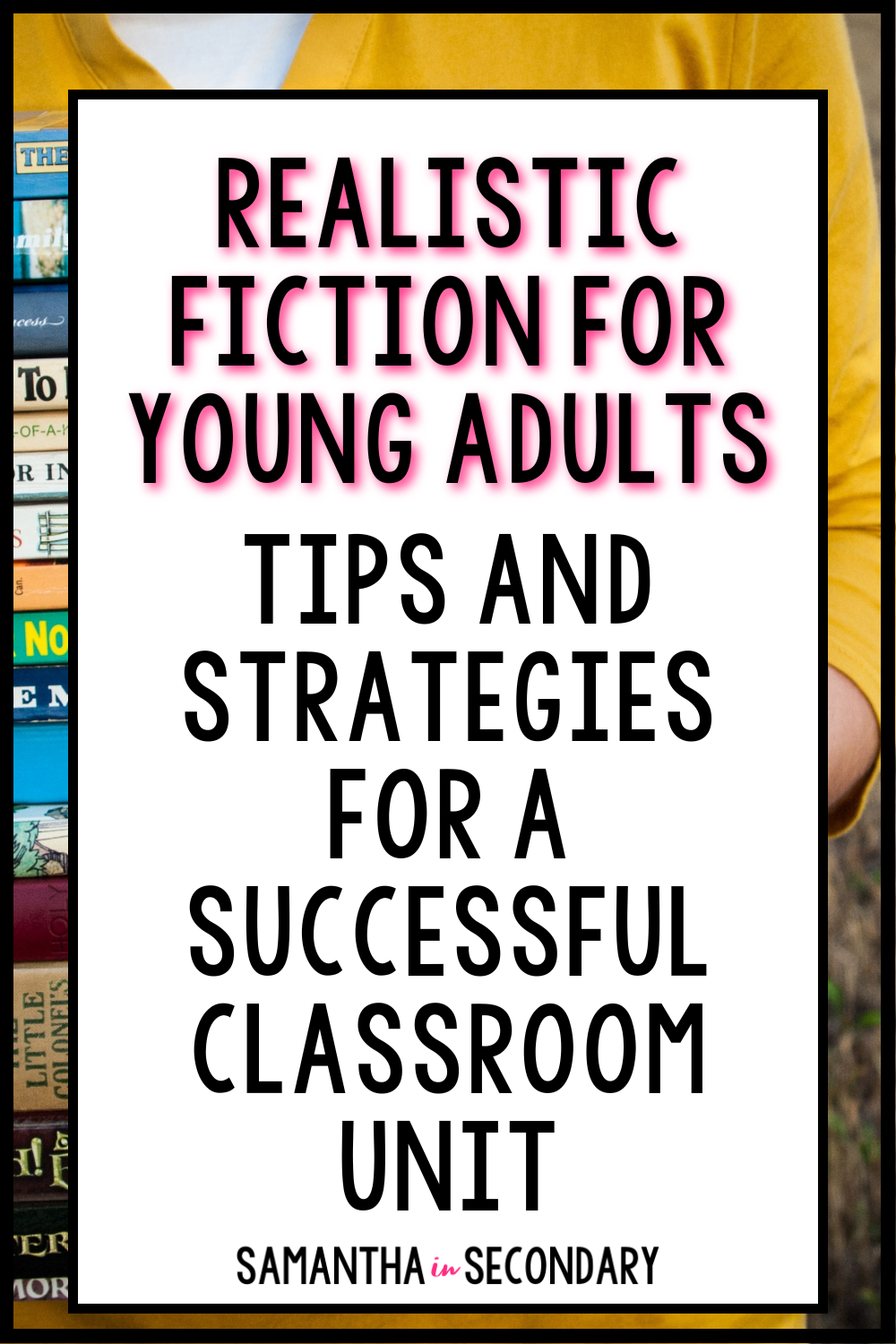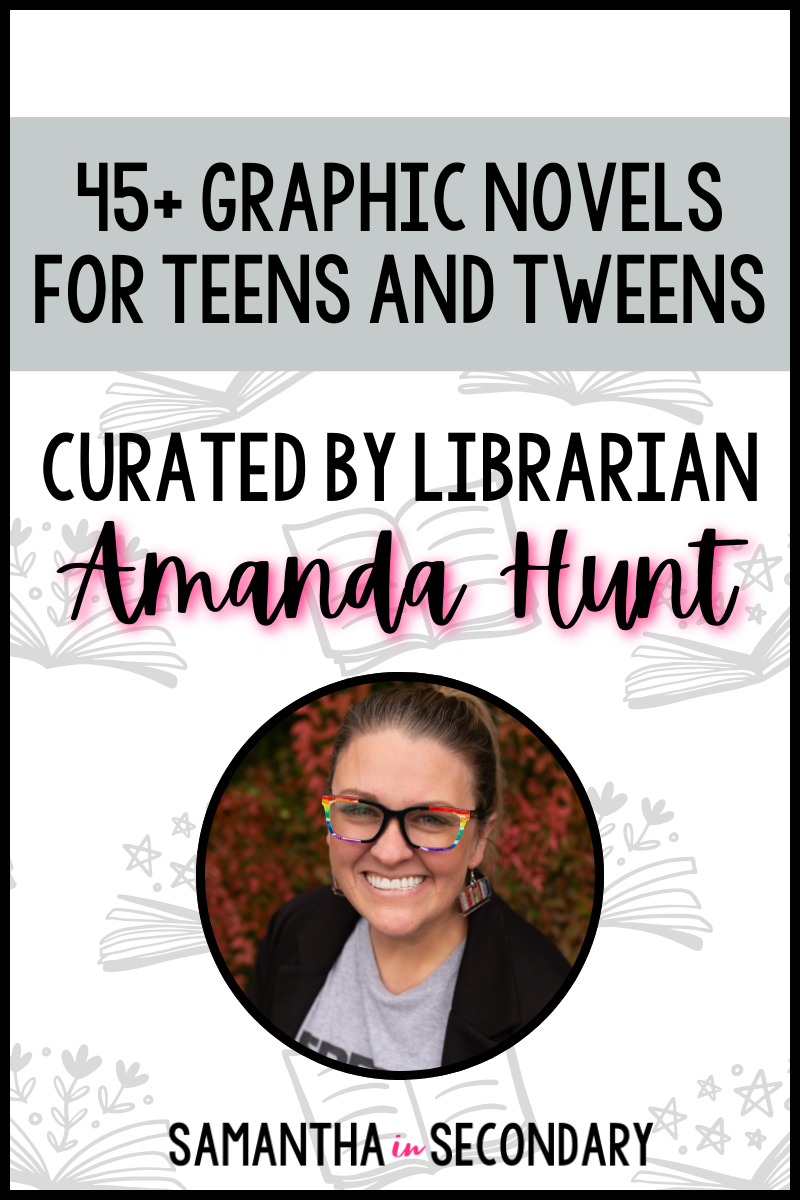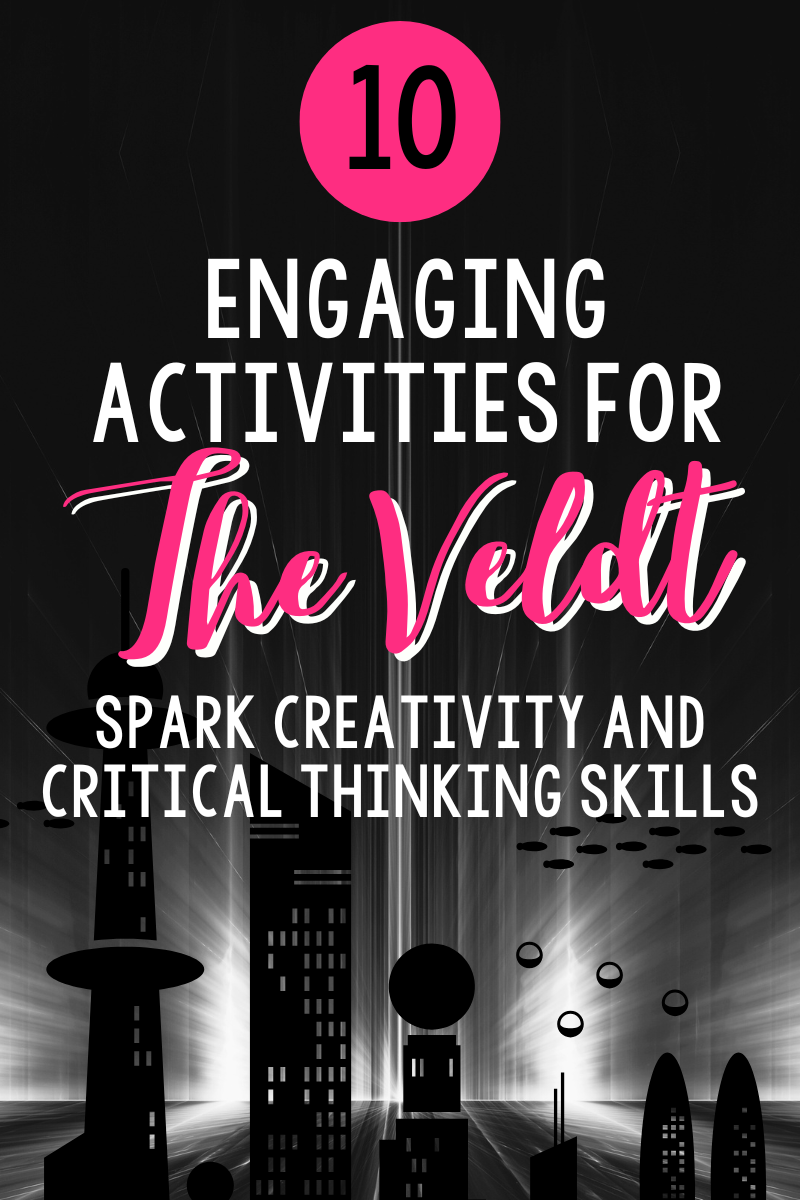Teaching figurative language can be super engaging. I love weaving it into the school year and reminding students that English can be fun. Below are 7 activities that you can use any time in the school year to teach figurative language in your secondary ELA classroom.
1. Use direct instruction first
Probably the easiest way to teach figurative language is to just jump right in teaching the terms explicitly. Strengthen student writing with old school notetaking and definition reviews, and of course, practice activities. Sometimes it’s best just to start with the basics, especially if you know your students don’t know the terms or are in serious need of a refresher. If you’d like a premade resource of presentations and activities, you can find one here in my shop. It includes an informative Google Slides presentation, CLOZE notetaking worksheet, and practice activities like a fun color by code.
2. Practice spotting in the wild
A great way to help students grasp the concept of figurative language and make connections is to find examples “in the wild”. As a quick example, song lyrics are full of figurative language. Honestly, I think this is a much more effective tool than just poetry. Grab my free figurative language song review activity below. It’s a fun option and includes a list of school-appropriate suggestions.
3. Find the worst examples
Alternatively you can send your students on a hunt for the worst examples they can find. Trust me, there are some goodies. “Laughter is like a beautiful bubble from the rosebud of baby-hood” definitely caught my eye. It’s from Grenville Kleiser’s Fifteen Thousand Useful Phrases and is full of poorly aged examples of figurative language. There’s a few examples from the book here. Of course you can also find modern examples, and students might have an extended assignment where they try to find the most or the worst examples to share with the class. Or you can have a class contest to come up with the worst examples. It’s a fun way to practice and play with figurative language.
4. Use strong mentor texts from YA novels
Another way to use modern examples is to use mentor texts from YA novels. Students can choose from options you’ve preselected, novels read in class, or their personal selection. You might even consider this activity as a way to touch back to figurative language definitions later in the year. As you read a new novel, have students jot down interesting similes and metaphors to review. This Book Riot article provides some great examples to give you a strong starting point.
5. Create poster sets
My favorite classroom decorations are student made. It gives them ownership of their class space and is an opportunity to build class community. And, it’s a review opportunity. Students get to pull their creative and artistic side into their work and create posters with definitions and examples of figurative language. You can take any of the previous activities and have them visualize the phrase, and make something awesome to add to your walls.
6. Use children’s picture books
If you need a simpler activity to spot examples, try children’s books. The examples are usually more obvious and explicit, so students may be able to follow a little better. This is also a good way to differentiate your instruction. Don’t toss the idea if you think this is too simple – beef it up by having students write their own children’s story. Even better, have students read their stories to elementary students. The Reading Mama has a nice list of children’s books as does The Butterfly Teacher (find it here) that include figurative language examples.
7. Use short stories (like The Pedestrian or Marigolds)
Using short stories keeps the work in manageable chunks and still allows students to practice finding figurative language examples. Rather than using longer works, you may find more success giving students shorter stories. Shorts are also a good way to quickly review figurative language throughout the year, or to use as sub plans. My short story activities for Marigolds by Eugenia Collier or The Pedestrianby Ray Bradbury are great resources to get you started.
If you want to save some time, check out my full mini-unit bundle that will give you access to a complete set of lessons that will help you teach, practice, and assess your students’ knowledge of figurative language. It includes ideas from above (such as song lyric task cards), but also extends that creativity into one of my favorite projects- my extended metaphor creative writing assignment. (Seriously, I get the most beautiful work from this project!) Click here to check it out. It’s the best bang for your buck if you’re looking for a full unit to really dig deep into understanding figurative language.
Figurative language is a great “hook” for students, and there are so many fun ways to incorporate the playfulness of language. What are your best loved activities for teaching figurative language? Have you tried any of these in your class? Let me know in the comments below or over on Facebook and Instagram what activities your students like the best!
Happy teaching!




